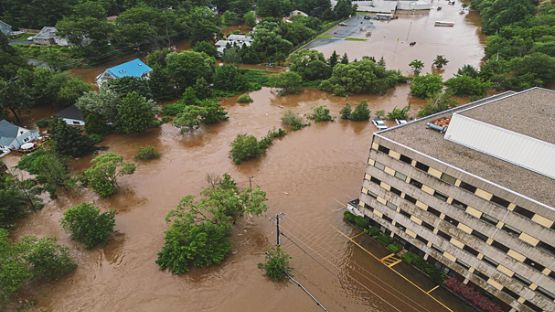As Canadian households increasingly adopt clean technologies, including electric vehicles (EVs), solar panels, and smart home devices, batteries and their storage systems have become a vital part of modern living.
However, with this technological shift comes a growing need to understand and manage the associated safety risks. This is particularly true for lithium-ion batteries, which are now common in everything from power tools and lawnmowers to toys and e-bikes.
Lithium-ion batteries are efficient, but they are also considered the most problematic, posing fire and explosion risks if not handled correctly. These batteries can experience thermal runaway, a chain reaction that leads to overheating and fires. As incidents involving battery-related fires rise, prioritizing safety is essential for protecting your property.
Key safety practices for using lithium-ion batteries
At Aviva, we are seeing an uptick in battery-related property claims. These mainly involve damage caused by overheated or exploded batteries—issues that can be prevented by understanding how to use and charge devices safely.
Prevent charging hazards
Improper charging practices are a major contributor to battery-related fires. It is critical to use the charger that came with the battery or device. For example, attempting to use a lithium charger on a lead-acid battery, or a weed whacker charger for an e-bike, can cause an explosion and fire. Consult the product manuals and use the chargers the way they are intended.
Another common mistake is using extension cords for high-power charging. These cords are not designed for continuous heavy loads and can overheat, leading to electrical fires
To prevent these kinds of hazards
- Avoid coiled or damaged cords
- Use dedicated circuits and CSA-certified outlets
- Charge in a well-ventilated area
Never rely on extension cords for permanent or high-load charging setups.
Avoid overloading electrical circuits
Circuit overload is another common risk with charging lithium-ion batteries. For example, you don’t want to have multiple tools charging on a power bank at a time. Or have multiple collector cars trickle charging on the same circuit in a garage. Pay attention to the load you’re putting on the circuit and spread them out across multiple circuits.
In garages and other charging zones, install Ground Fault Circuit Interrupters (GFCIs) and Arc Fault Circuit Interrupters (AFCIs). These are "mini failsafes" that detect electrical faults—GFCI for moisture, AFCI for non-wet surfaces—and will trip a mini-breaker before the fault reaches the main electrical panel. This prevents a surge that could branch out to other circuits and overload heavy appliances.
Safely store chargers and battery-powered devices
Install individual chargers or batteries in ventilated, fire-rated enclosures in garages or sheds. Canadian building codes prohibit installing these chargers or batteries below grade (like in basements) or in living spaces such as closets, bathrooms, or stairways.
Typically, in new homes, electricians install batteries in explosion-proof cabinets according to Canadian building codes.
Fire safety measure
It’s important to have a heat detector near chargers or batteries to alert you to any fire activity. If you detect a fire, call 911 immediately, evacuate your home, and wait in a secure place until firefighters arrive.
Insurance and regulatory compliance
Using uncertified equipment or improperly charging devices could affect your homeowners insurance. Here’s how to make sure you stay in compliance:
- Disclosure: Tell your broker if you install large battery systems such as off-grid power packs or battery banks for solar backups. Insurers want to know about these systems, especially in off-grid properties, to ensure you have the right coverage. Your insurer could potentially offer more coverage or address specific coverage for battery explosion.
- Compliance: Compliance with safety standards like UL 9540 and CSA C22.1 not only enhances safety but also reassures insurers. Provincial codes enforce standards that require fire-rated enclosures and proper labeling.
- Professional installation: Consulting certified professionals for battery system installation ensures that the system is properly sized for your home's needs and local climate, meets local codes, and reduces liability. Professional installation is often required for rebates, such as those for solar in British Columbia and Ontario.
- Inspections: Electrical inspections and policy endorsements may be required to approve battery installations. If you are an Ovation client, a home appraisal is automatically done upon sign-on and our specialists can offer best-practice recommendations.
Additional resources
- Lithium-ion battery safety
- UL 9540 regulations in Canada: What you need to know
- Lithium-ion battery safety lesson plan and safety tip sheet
Aviva Risk Management Solutions is here to help
Questions or concerns about your coverage? Please consult your broker.
If you have technical or risk-related questions, feel free to reach out to our professional risk consultants across Canada as part of Aviva Risk Management Solutions (ARMS). Email them at hnwarms.canada@aviva.com.













